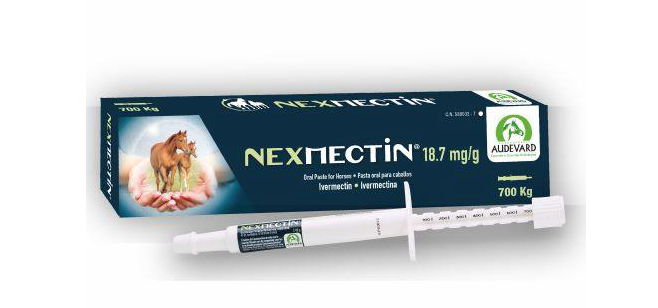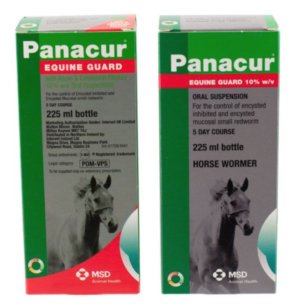Description
Nexmectin is used to treat:
- Large strongyles
- Small strongyles (not encysted larvae)
- Ascarids
- Pinworms
- Neck threadworms
- Bots
Nexmectin contains 18.7mg/g ivermectin. Dosage of nexmectin is 1 notch per 100kg body weight of horse up to 700kg.
Administration
The paste is given by oral route. To ensure administration of a correct dose, body weight should be determined as accurately as possible. The animal’s mouth should be free from food to ensure swallowing. Turn the screw gauge on the syringe plunger to the body weight of the horse. The tip of the syringe barrel should be inserted at the interdental space (the gap between the front and back teeth) and the paste deposited on the base of the tongue. Advance the plunger as far as it will go, depositing the medication on the base of the tongue. Immediately elevate the horse’s head for a few seconds to ensure swallowing.
Worm resistance can be caused by too frequent administration of the same class of anthelmintic or under-dosing when administering. It is important to accurately determine your horses bodyweight. Ideally a targeted worming programme should be adhered to using worm egg counts and only worming the horses with high counts. Check out our blog on worm management here
Nexmectin is safe to use in pregnant and lactating mares.
For further information on this product please see the link below:
https://www.noahcompendium.co.uk/?id=-478613&fromsearch=true#iosfirsthighlight
Ivermectin can be poisonous to dogs therefore always dispose of the oral syringe responsibly.






